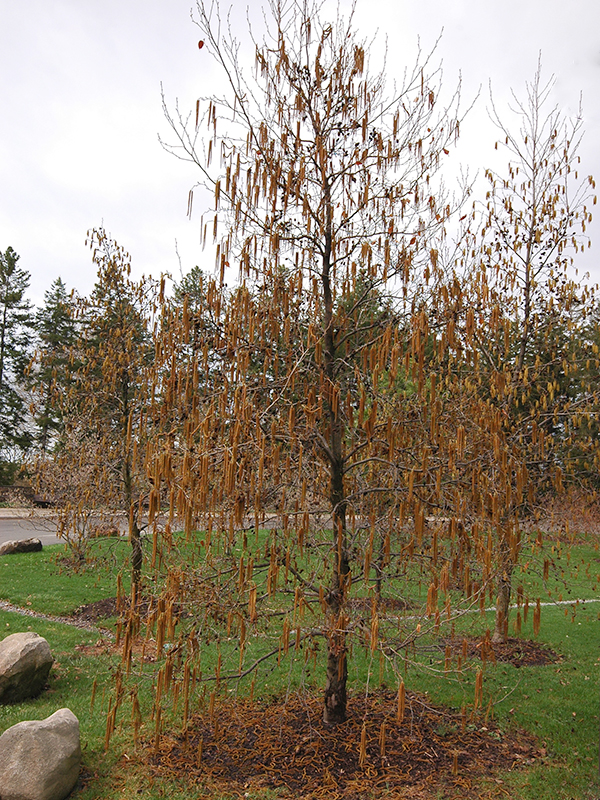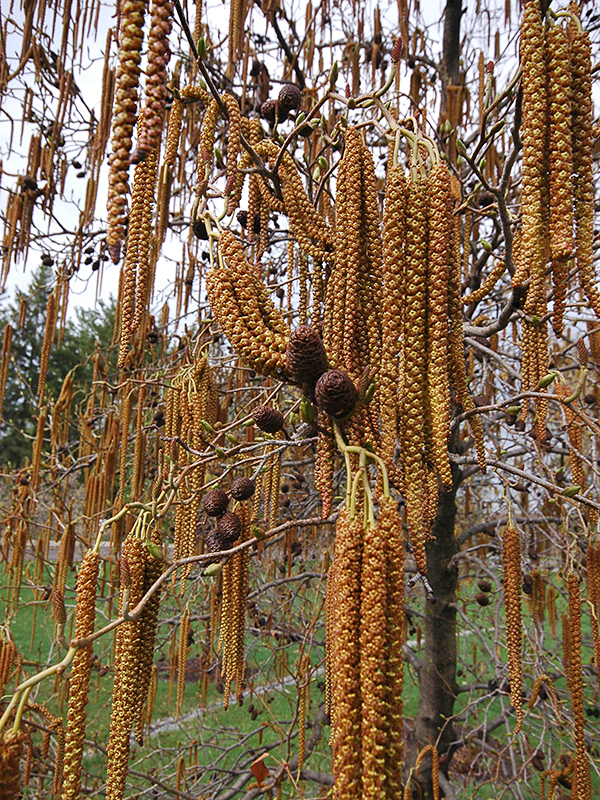
Woody > Alnus > Alnus cordata > Alnus cordata
Alnus cordata
Italian Alder
Origin: Southern Italy, France and Albania.
Mike's
Opinion


"
A handsome and fast growing specimen tree that can also be used in windbreaks, parks and gardens. It has very interesting male and female flowers and quite prominent cones.
Michael Pascoe, NDP., ODH., CLT., MSc. (Plant Conservation)
"
| Family |
| Betulaceae |
| Genus |
| Alnus |
| Species |
| cordata |
| Category |
| Woody |
| Type |
| Tree (deciduous) |
| Pronunciation |
| USDA Hardiness Zone |
| 6a - 9b |
| Canadian Hardiness Zone |
| 5a - 8b |
| RHS Hardiness Zone |
| H7 |
| Temperature (°C) |
| -23 - (-1) |
| Temperature (°F) |
| -10 - 30 |
| Height |
| 25 m |
| Spread |
| 6 m |
Photographs
Description and Growing Information
Flowering Period
| General Description |
| A handsome, large, and fast growing tree usually found in gardens or in parks. Provides excellent screening or windbreaks and winter interest. It is tolerant of a wide variety of soils and growing situations including pollution. This species has been placed on the IUCN Red List as least concern. |
| Landscape |
| Works well in a large garden or as a street tree, as a specimen tree in a park, but are most desirable for windbreaks and screening. Provides shelter because of its fast growing nature. |
| Cultivation |
| Full-partial sun, it can tolerate acidic, neutral, and alkaline soils. Tolerates dry, loamy, and clay soils but is very tolerant and thrives even in wet and poor soil conditions. Very pollution tolerant and resistant to wind. |
| Shape |
| Upright and narrow crown. |
| Growth |
| Fast |
| ID Characteristic |
| Easily identified by the pronounced male catkins in early spring and the female flowers that produces small upright cones. The glossy green oval -round shaped leaves are typical of most Alder species. |
| Pests |
| In alkaline soils it can become susceptible to chlorosis. Identifiable by abnormally small leaves that have turned a yellowish- brown colour. |
| Bark/Stem Description |
| When the bark is young it is a greenish-gray colour and has a large number of visible lenticels. When the bark matures it becomes a grayish-brown colour and has flat ridges. |
| Leaf Description |
| A glossy green leaf with a tint of orange at the start of a new season. The leaf is simple, alternate, and rounded to somewhat oval in shape. Leaves are broad, 6 cm in width and 5-10 cm in length. |
| Flower Description |
| The male flowers produce catkins that are 5-8 cm in length. They are a yellow- green colour and hang in clusters. The catkins are borne in early spring before the leaves appear. The female flowers are small, about 6 mm in length. They are a reddish- green colour that will eventually develop into a small cone. The cones appear in early spring and are persistent into the winter. |
| Fruit Description |
| Ripens in early spring and continues through winter. A cone like fruit 20- 25 mm in length. Originally green in colour, when ripe it turns a reddish-brown: contains a large amount of winged seeds. |
| Colour Description |
| Leaves are a glossy green with a hint of orange at the start of a new season. The catkins are a greenish- yellow and the cones are a reddish- green. |
| Notable Specimens |
| The Niagara Parks Botanical Gardens, Niagara Falls, Ontario, Canada. Westonbirt, The National Arboretum, Tetbury, Gloucestershire, England. |
| Propagation |
| Seed and hardwood cuttings. Seeds should be planted when ripe and will germinate in spring when the weather warms. When seedlings are large enough transplant into individual pots. Cuttings from taken from hardwood in autumn when the leaves fall and rooted in sandy soil will also work well. |



